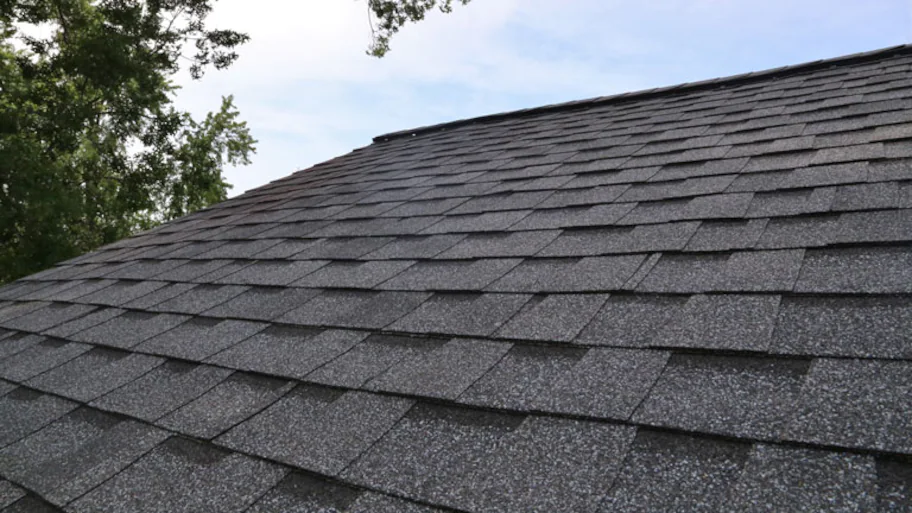Comparing Prices Among Roofing Companies in Gainesville Florida
Comparing Prices Among Roofing Companies in Gainesville Florida
Blog Article
Finest Practices for Ensuring Proper Roof Covering Ventilation
Making sure appropriate roofing ventilation is important for the durability and efficiency of a roof. A well balanced consumption and exhaust vent ratio, generally 1:300, plays a crucial function, with intake vents ideally put at the lower edge of the roofing for cool air entrance and exhaust vents at the height for warm air leave. Normal examinations to recognize blockages and preserve clear air movement are vital. Keeping insulation away from vents is important to stop air flow constraint. Recognizing these foundational components establishes the phase for more in-depth understandings right into installment and maintenance techniques that can substantially boost your roof system's efficiency.
Understand Air Flow Essentials
Appropriately understanding ventilation fundamentals is crucial for guaranteeing the longevity and effectiveness of roofing systems. Reliable air flow minimizes dampness accumulation and temperature extremes in the attic room, both of which can lead to considerable structural damage gradually. A well-ventilated roofing system aids in preventing usual issues such as mold development, wood rot, and ice dams, which can compromise the honesty of the roofing materials and the underlying frameworks.
The main goal of ventilation is to help with the activity of air, enabling a regular exchange between the outside and indoor settings. This equilibrium is attained via a mix of consumption and exhaust vents that function together to maintain optimum airflow. Intake vents, generally located along the eaves or soffits, enable fresh air to go into the attic area, while exhaust vents, often situated at or near the roof covering ridge, allow warm, humid air to escape.
Secret factors influencing the efficiency of roof covering ventilation include appropriate positioning, sufficient sizing, and ensuring that both consumption and exhaust vents are unhampered. Regular examination and upkeep are critical to recognize prospective clogs, damage, or ineffectiveness in the ventilation system, thereby securing the roofing system's efficiency and toughness.
Sorts Of Roofing Vents
Roofing system vents play a vital role in preserving efficient attic room air flow and, by extension, the total health of the roofing system. Different kinds of roof covering vents are readily available, each with special advantages tailored to certain roofing needs.

Soffit vents are set up under the eaves and job in tandem with roofing system vents to guarantee a balanced consumption and exhaust system. By permitting cooler air to enter from below, soffit vents facilitate the expulsion of warm air through top vents. Gable vents, situated on the exterior wall surfaces of the attic room, deal one more efficient remedy, specifically in homes with gable roofing systems.
Evaluate Your Present Air Flow

Next, think about the age and condition of your roof covering materials see here now and ventilation parts. Older systems may not abide by existing building regulations or may have worn away in time, minimizing their performance. Conduct a comprehensive assessment to identify any type of signs of damage, such as rust, damages, or voids that could endanger the system's performance.
In addition, measure the attic room temperature and humidity levels. High temperatures and humidity can suggest inadequate air flow - gainesville roofing companies. Utilize a hygrometer and thermometer to get accurate analyses, contrasting them with outdoor conditions. Persistent inconsistencies recommend prospective problems that require addressing.
Setup Best Practices
Efficient setup of roof covering air flow systems is critical for ensuring ideal performance and longevity. Appropriate installment begins with comprehending the particular ventilation needs of the structure and the roofing system it covers. This involves computing the correct proportion of intake to tire vents, normally sticking to the 1:300 regulation, which specifies one square foot of air flow for each 300 square feet of attic flooring space.

The positioning of vents is similarly crucial. Intake vents ought to be installed at the roofing's reduced edge, commonly in the soffits, to allow trendy air to enter. Exhaust vents, on the other hand, need to be mounted near or at the roof covering's height to promote the departure of cozy, damp air. This creates a natural air flow that helps Web Site keep temperature and wetness balance within the attic room area.
Seal all air vent connections meticulously to stop air leaks and possible water infiltration. Use top notch products and adhere to supplier standards to make sure longevity and effectiveness. In addition, incorporating ridge vents with baffles can significantly boost air flow performance by preventing wind-driven rain and snow from going into the attic.
Ultimately, exact installment of roof air flow systems minimizes possible issues such as mold development, ice dams, and architectural damage, making sure the roofing's integrity and the structure's overall health.
Routine Maintenance Tips
Uniformity in maintenance techniques is fundamental to guaranteeing the lasting performance of roofing air flow systems. Throughout these assessments, make sure that vents are totally free of debris, nests, and other blockages that could restrain air flow.
Cleaning up the vents is another vital job. Utilize a soft brush or a vacuum to get rid of dust and particles from consumption and exhaust vents. Be cautious not to harm the air vent displays or louvers throughout the process. Furthermore, inspect the attic area for any kind of indications of water damages, which can you could check here jeopardize the integrity of the roof covering system.
Correct insulation is similarly crucial. Make certain that attic insulation does not obstruct the vents, as this can badly restrict air flow. Reposition or replace it to preserve an effective barrier. if any type of insulation has actually shifted or resolved.
Last but not least, change any kind of damaged or missing out on parts without delay. Damaged vents, fractured shingles, or deteriorated blinking can all contribute to poor air flow and must be addressed immediately. Routine maintenance makes sure that the roofing ventilation system operates ideally, thereby prolonging the life-span of the roofing system itself.
Conclusion
Ensuring appropriate roof covering air flow is critical for preserving the effectiveness and resilience of a roof system. Adherence to the 1:300 consumption and exhaust vent ratio, paired with the strategic placement of vents, is vital.
A balanced consumption and exhaust vent ratio, typically 1:300, plays a crucial duty, with intake vents ideally placed at the reduced edge of the roofing for cool air access and exhaust vents at the optimal for cozy air departure. Consumption vents, usually situated along the eaves or soffits, enable fresh air to get in the attic room space, while exhaust vents, usually positioned at or near the roofing system ridge, make it possible for hot, damp air to run away.
Soffit vents are set up under the eaves and job in tandem with roofing vents to ensure a balanced intake and exhaust system. By allowing cooler air to get in from below, soffit vents facilitate the expulsion of warm air via upper vents. Adherence to the 1:300 consumption and exhaust air vent proportion, paired with the strategic placement of vents, is crucial.
Report this page